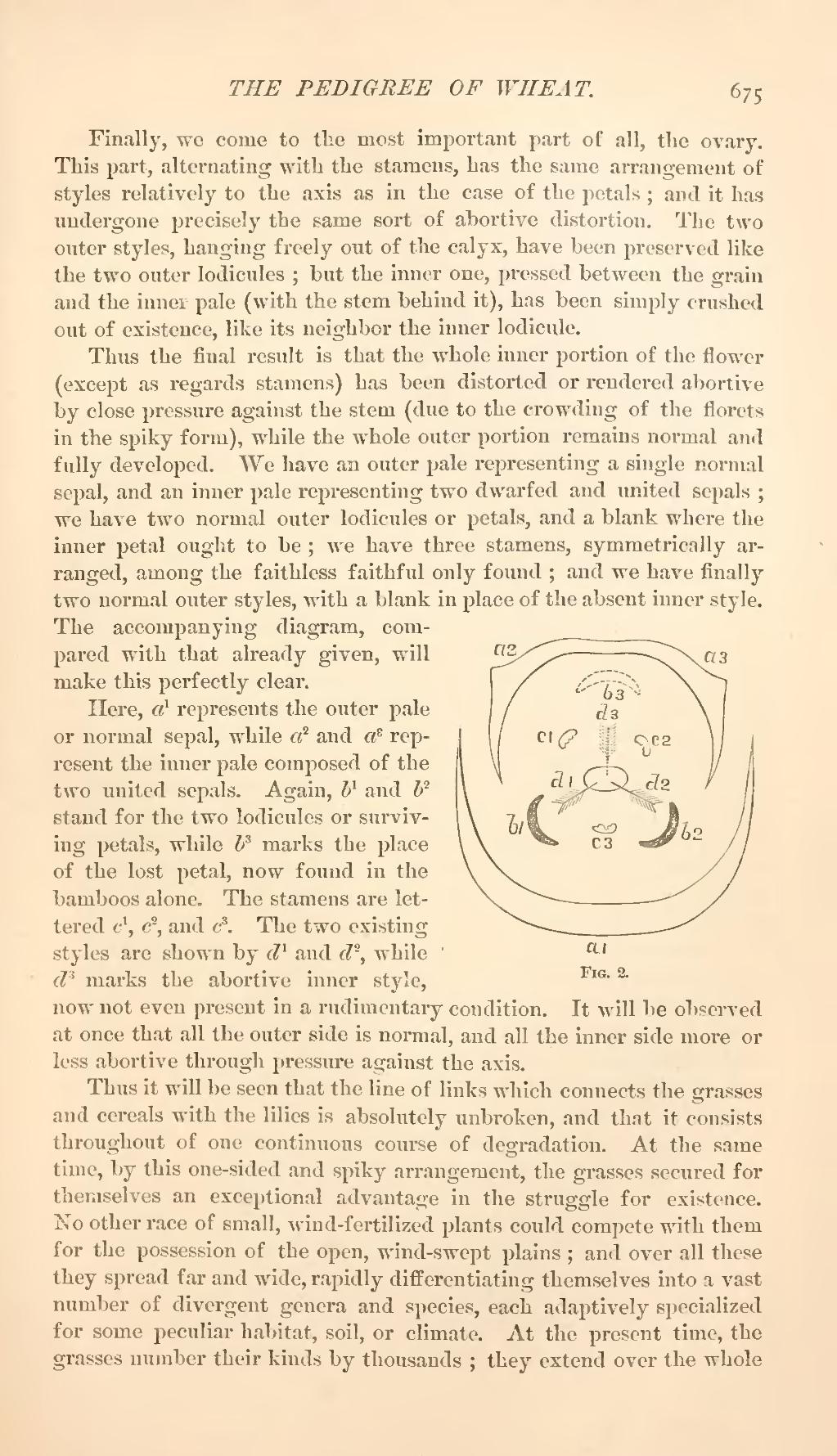Finally, we come to the most important part of all, the ovary. This part, alternating with the stamens, has the same arrangement of styles relatively to the axis as in the case of the petals; and it has undergone precisely the same sort of abortive distortion. The two outer styles, hanging freely out of the calyx, have been preserved like the two outer lodicules; but the inner one, pressed between the grain and the inner pale (with the stem behind it), has been simply crushed out of existence, like its neighbor the inner lodicule.
Thus the final result is that the whole inner portion of the flower (except as regards stamens) has been distorted or rendered abortive by close pressure against the stem (due to the crowding of the florets in the spiky form), while the whole outer portion remains normal and fully developed. We have an outer pale representing a single normal sepal, and an inner pale representing two dwarfed and united sepals; we have two normal outer lodicules or petals, and a blank where the inner petal ought to be; we have three stamens, symmetrically arranged, among the faithless faithful only found; and we have finally two normal outer styles, with a blank in place of the absent inner style. Fig. 2. The accompanying diagram, compared with that already given, will make this perfectly clear.
Fig. 2. The accompanying diagram, compared with that already given, will make this perfectly clear.
Here, a1 represents the outer pale or normal sepal, while a2 and a3 represent the inner pale composed of the two united sepals. Again, b1 and b2 stand for the two lodicules or surviving petals, while b3 marks the place of the lost petal, now found in the bamboos alone. The stamens are lettered c1, c2, and c3. The two existing styles are shown by d1 and d2, while d3 marks the abortive inner style, now not even present in a rudimentary condition. It will be observed at once that all the outer side is normal, and all the inner side more or less abortive through pressure against the axis.
Thus it will be seen that the line of links which connects the grasses and cereals with the lilies is absolutely unbroken, and that it consists throughout of one continuous course of degradation. At the same time, by this one-sided and spiky arrangement, the grasses secured for themselves an exceptional advantage in the struggle for existence. No other race of small, wind-fertilized plants could compete with them for the possession of the open, wind-swept plains; and over all these they spread far and wide, rapidly differentiating themselves into a vast number of divergent genera and species, each adaptively specialized for some peculiar habitat, soil, or climate. At the present time, the grasses number their kinds by thousands; they extend over the whole
